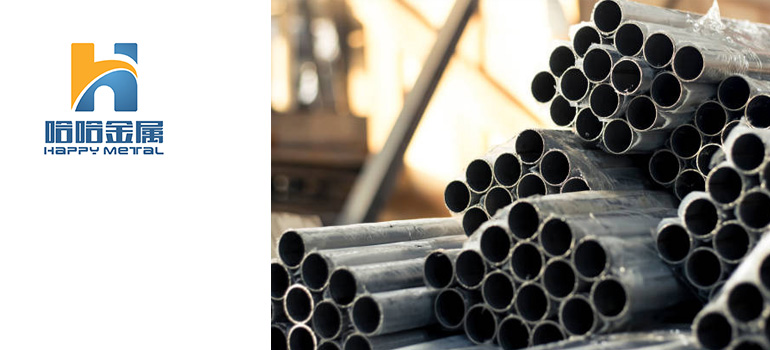Summary:
Carbon steel seamless pipe: an overview of its properties, application, and benefits!
Definition and characteristics of carbon steel seamless pipe
Major Application Areas of Carbon Steel Seamless Pipe
Manufacturing Process of Carbon Steel Seamless Pipe
Advantages and Challenges of Carbon Steel Seamless Pipe

Experience the seamless perfection of carbon steel seamless pipes. These remarkable pipes embody strength, durability, and precision, delivering unmatched performance across a diverse range of industries.
With their seamless construction, carbon steel seamless pipes offer a smooth and friction-free flow, ensuring optimal efficiency in fluid transportation. From the oil and gas sector to power generation, automotive manufacturing to infrastructure development, these pipes stand as the backbone of critical applications worldwide.
Embrace the advantages of carbon steel seamless pipes and witness the seamless harmony of reliability and excellence. Elevate your projects with the unrivaled quality and performance of carbon steel seamless pipes.
Definition and characteristics of carbon steel seamless pipe
Carbon steel seamless pipe is a form of pipe constructed from carbon steel, which is an iron and carbon alloy. It is made via a method known as seamless pipe fabrication, in which a solid cylindrical billet of carbon steel is heated and punctured to form a hollow tube. This process produces a high-quality output by ensuring a smooth and homogeneous pipe with no welded connections.
Carbon steel seamless pipes have multiple properties that make them popular in a variety of applications. First and foremost, they have outstanding strength and endurance, making them suited for demanding applications where mechanical stress resistance is critical. Furthermore, these pipes offer great corrosion resistance, allowing them to survive extreme conditions and chemical exposure. Furthermore, carbon steel seamless pipes offer superior dimensional accuracy, ensuring precise fittings and connections. They are also known for their ability to handle high temperatures and pressures, making them suitable for a lot of applications.
Major Application Areas of Carbon Steel Seamless Pipe
Carbon steel seamless pipes find extensive application across various industries due to their advantageous properties. Here are the major application areas of carbon steel seamless pipes:
Oil and Gas Industry:
- Carbon steel seamless pipes are widely used in the oil and gas industry for conveying fluids, such as crude oil, natural gas, and petroleum products.
- They are preferred for their high strength, durability, and resistance to corrosion, making them suitable for demanding offshore and onshore environments.
Power Generation:
- Carbon steel seamless pipes are employed in power plants for transporting steam at high temperatures and pressures.
- Their ability to withstand extreme conditions, including high temperatures and thermal stresses, makes them ideal for power generation applications.
Automotive Industry:
- Carbon steel seamless pipes are used in the manufacturing of automotive components, such as exhaust systems and structural parts.
- Their excellent formability and weldability, coupled with high strength, make them suitable for automotive applications.
Construction and Infrastructure:
- Carbon steel seamless pipes are utilized in construction and infrastructure projects, including buildings, bridges, and pipelines.
- Their strength, reliability, and ease of fabrication contribute to their widespread use in structural applications.
Mechanical and Engineering Applications:
- Carbon steel seamless pipes find application in various mechanical and engineering sectors, including machinery, equipment manufacturing, and fabrication.
- Their versatility, affordability, and availability in different sizes and grades make them a preferred choice in these industries.
Manufacturing Process of Carbon Steel Seamless Pipe
The manufacturing process of carbon steel seamless pipe can be divided into several stages:
- Raw material selection
- Choose carbon steel billets or solid cylindrical bars based on chemical composition and mechanical properties.
- Piercing
- Heat the selected billets to a high temperature.
- Pierce the heated billets through the center to create a hollow tube using specialized machinery.
- Rolling
- Subject the hollow tube to rolling and sizing operations.
- Elongate and shape the tube to the desired diameter and thickness.
- Ensure the pipe meets specified requirements and tolerances.
- Heat treatmen
- Additional processes like annealing, normalizing, or quenching and tempering may be applied.
- Improve mechanical properties and structural integrity of the seamless pipe.
- Reduce internal stresses and enhance strength and toughness.
- Quality control
- Perform inspection and testing for defects such as cracks or inclusions.
- Ensure compliance with industry standards and customer specifications.
Advantages and Challenges of Carbon Steel Seamless Pipe
Carbon steel seamless pipes offer numerous advantages but also come with specific challenges. Here are the advantages and challenges of carbon steel seamless pipes:
Advantages
Strength and Durabilit
Carbon steel seamless pipes exhibit excellent strength and durability, making them suitable for high-pressure and high-temperature applications.
Corrosion Resistance
These pipes have good resistance to corrosion, ensuring long-term performance in various environments.
Smooth Interior Surface
The seamless manufacturing process provides a smooth interior surface, reducing friction and improving fluid flow efficiency.
Precise Dimensional Accuracy
Carbon steel seamless pipes offer precise dimensional accuracy, ensuring tight fittings and compatibility with other components.
Cost-Effectiveness
Carbon steel seamless pipes are cost-effective compared to other materials, making them a popular choice in many industries.
Challenges
Manufacturing Complexit
The production of carbon steel seamless pipes involves complex manufacturing processes, requiring advanced equipment and skilled workforce.
Specialized Handling and Transport
Due to their weight and size, handling and transporting large carbon steel seamless pipes may require specialized equipment and logistics.
While carbon steel seamless pipes offer significant advantages, it’s crucial to consider the specific challenges associated with their manufacturing, size range, pricing, and logistics.




